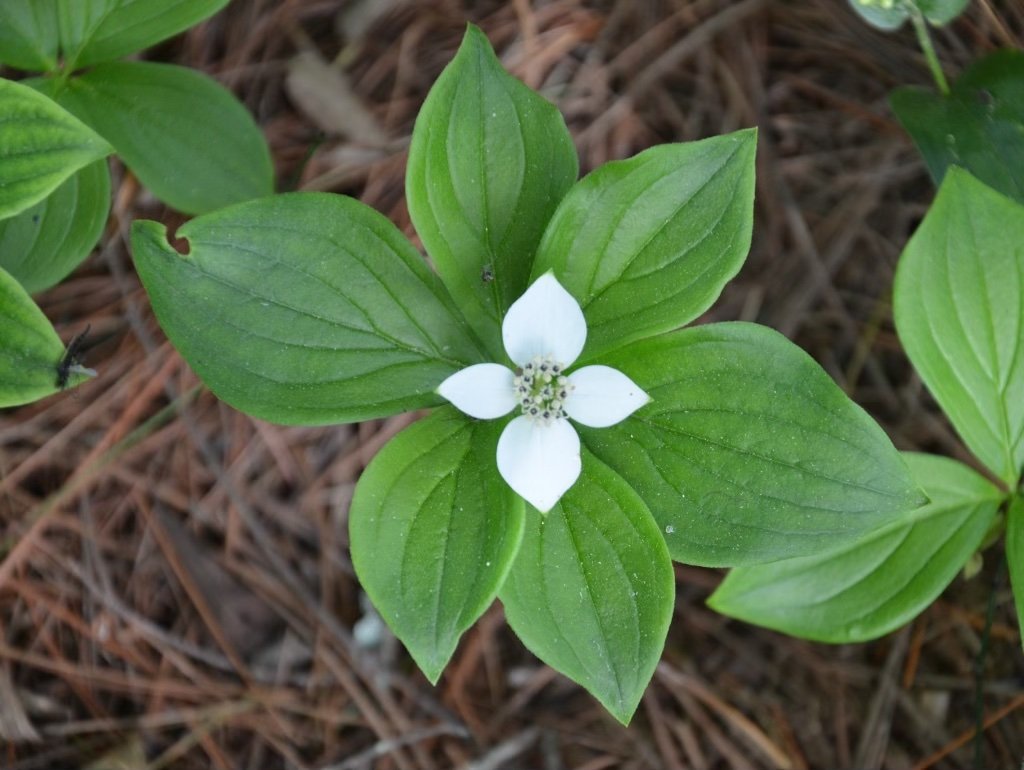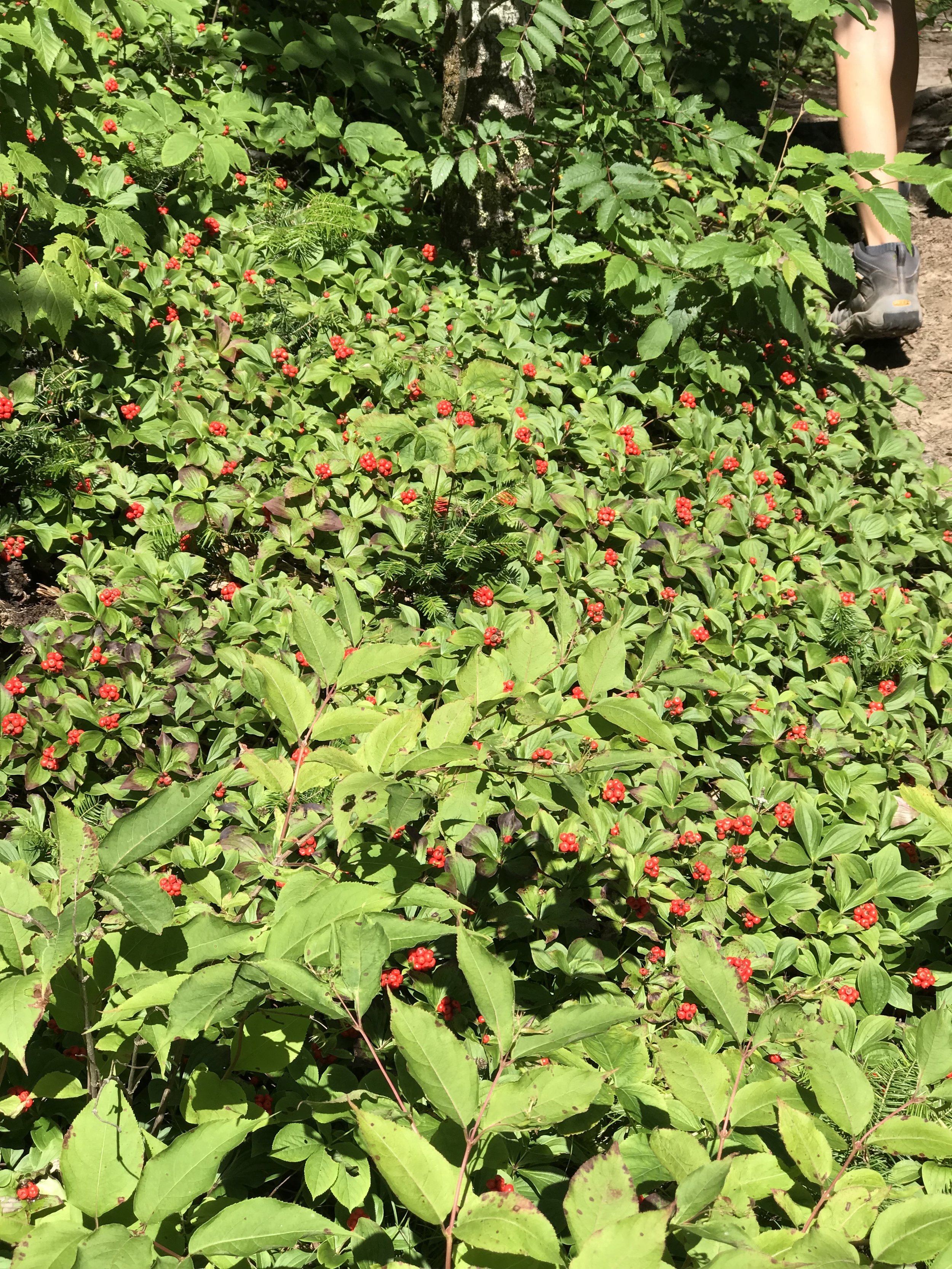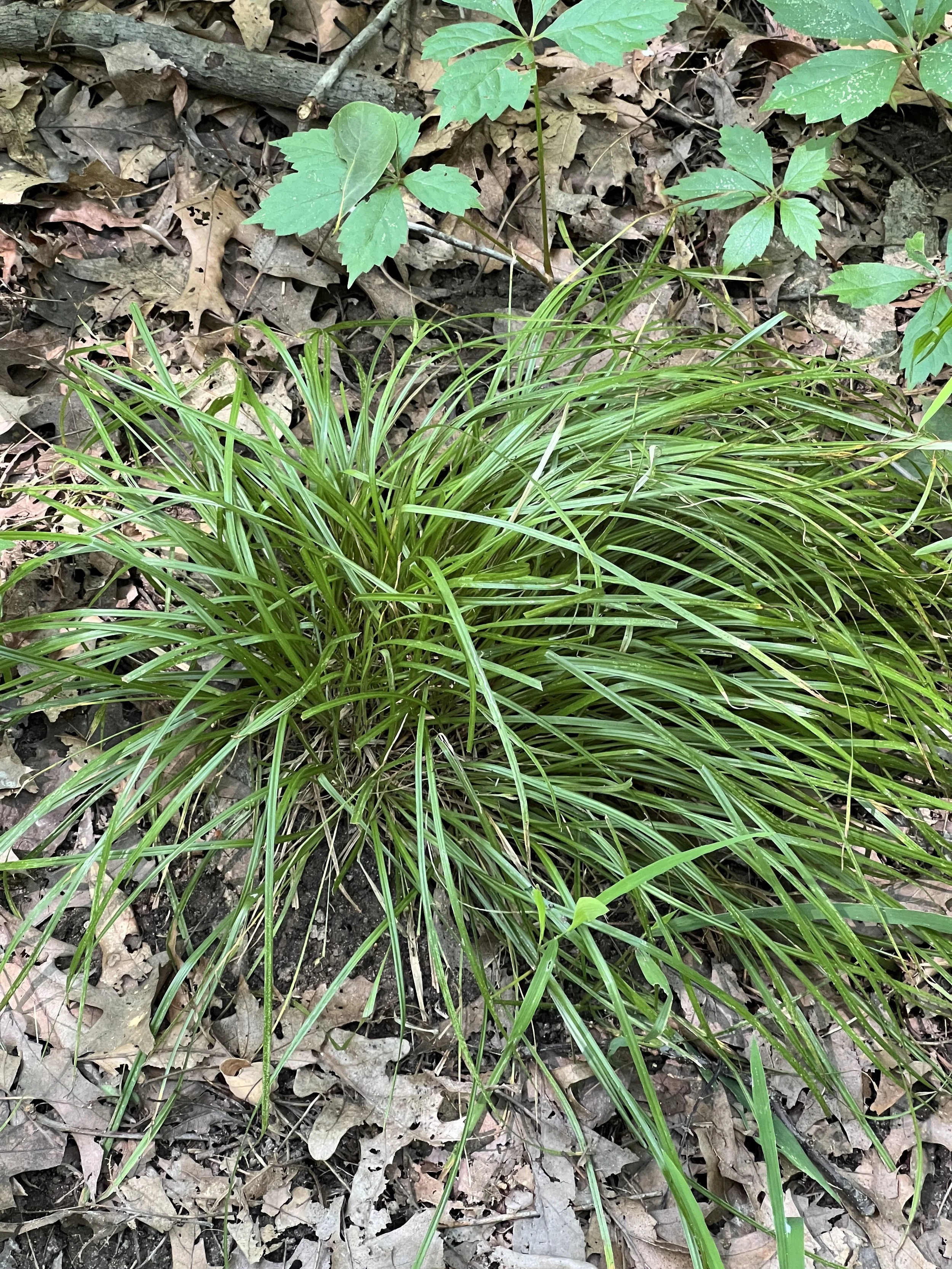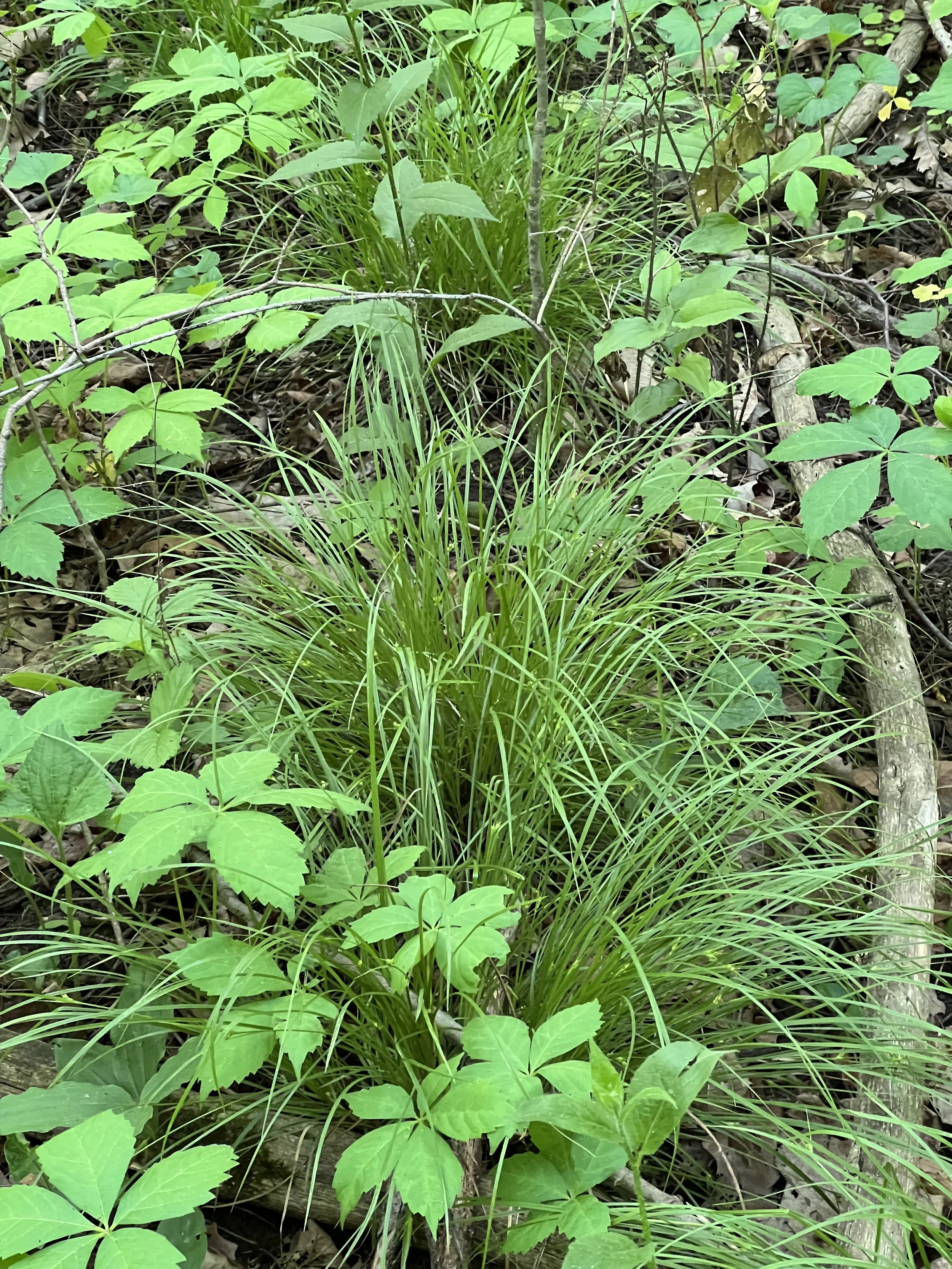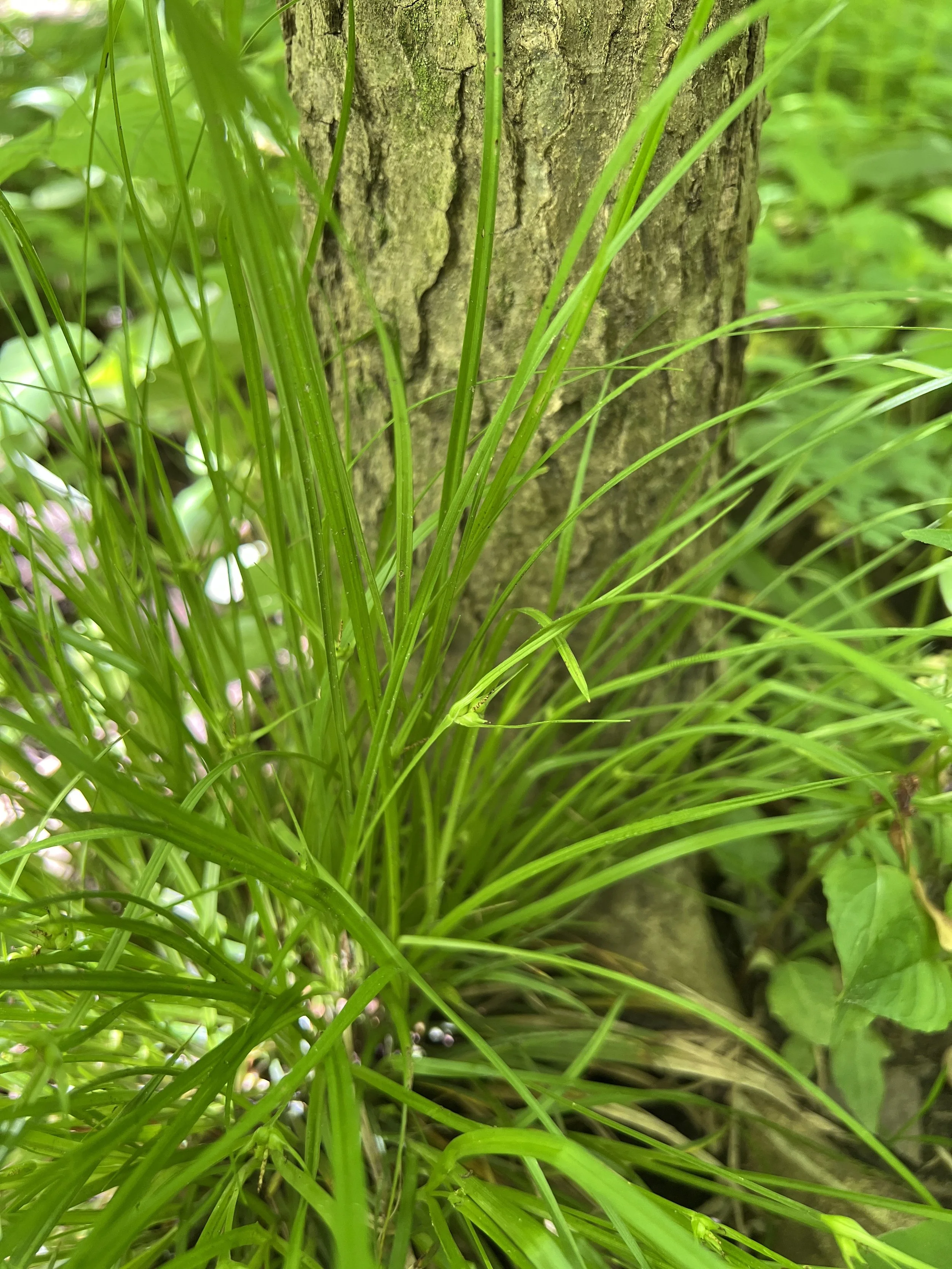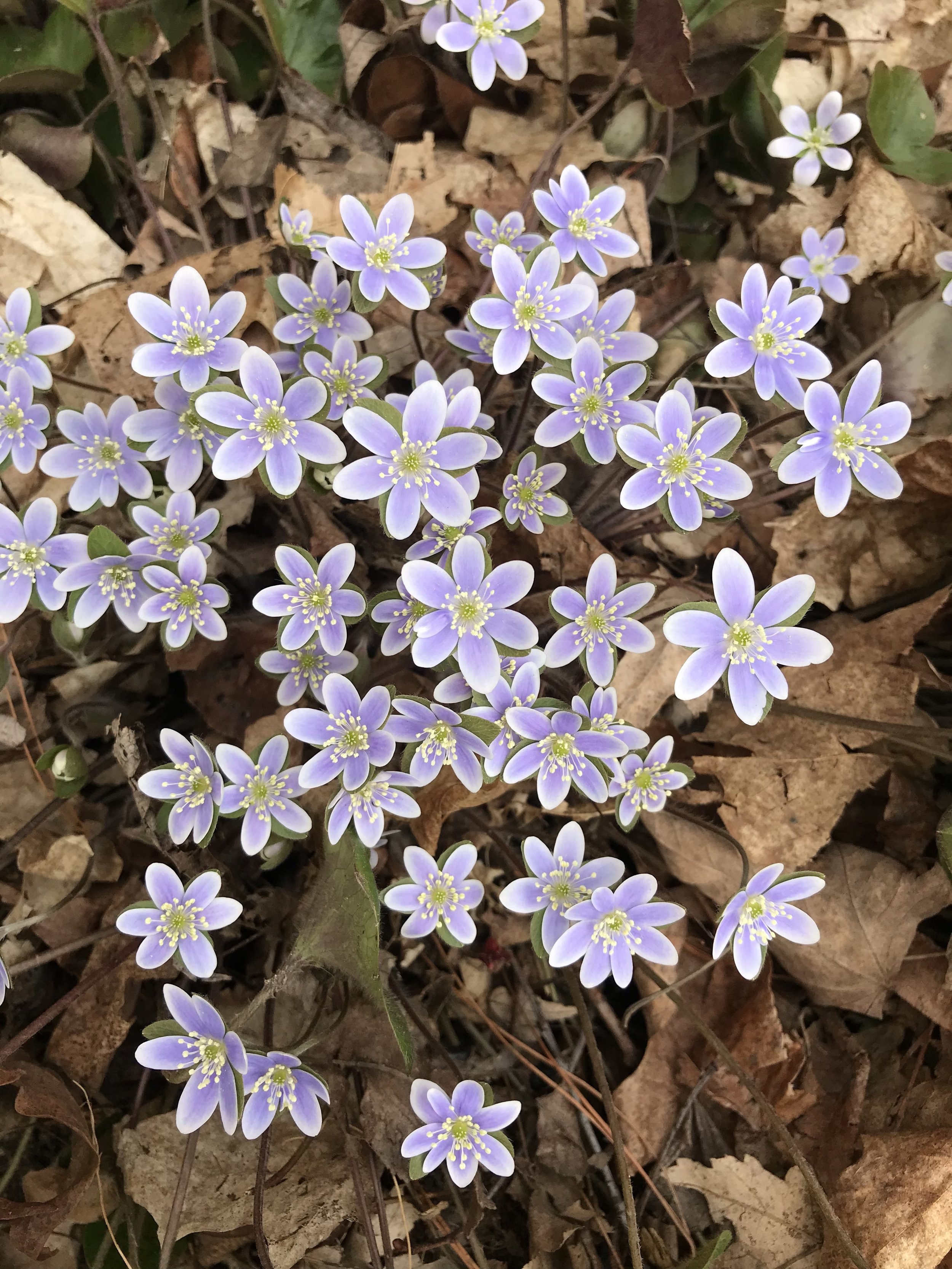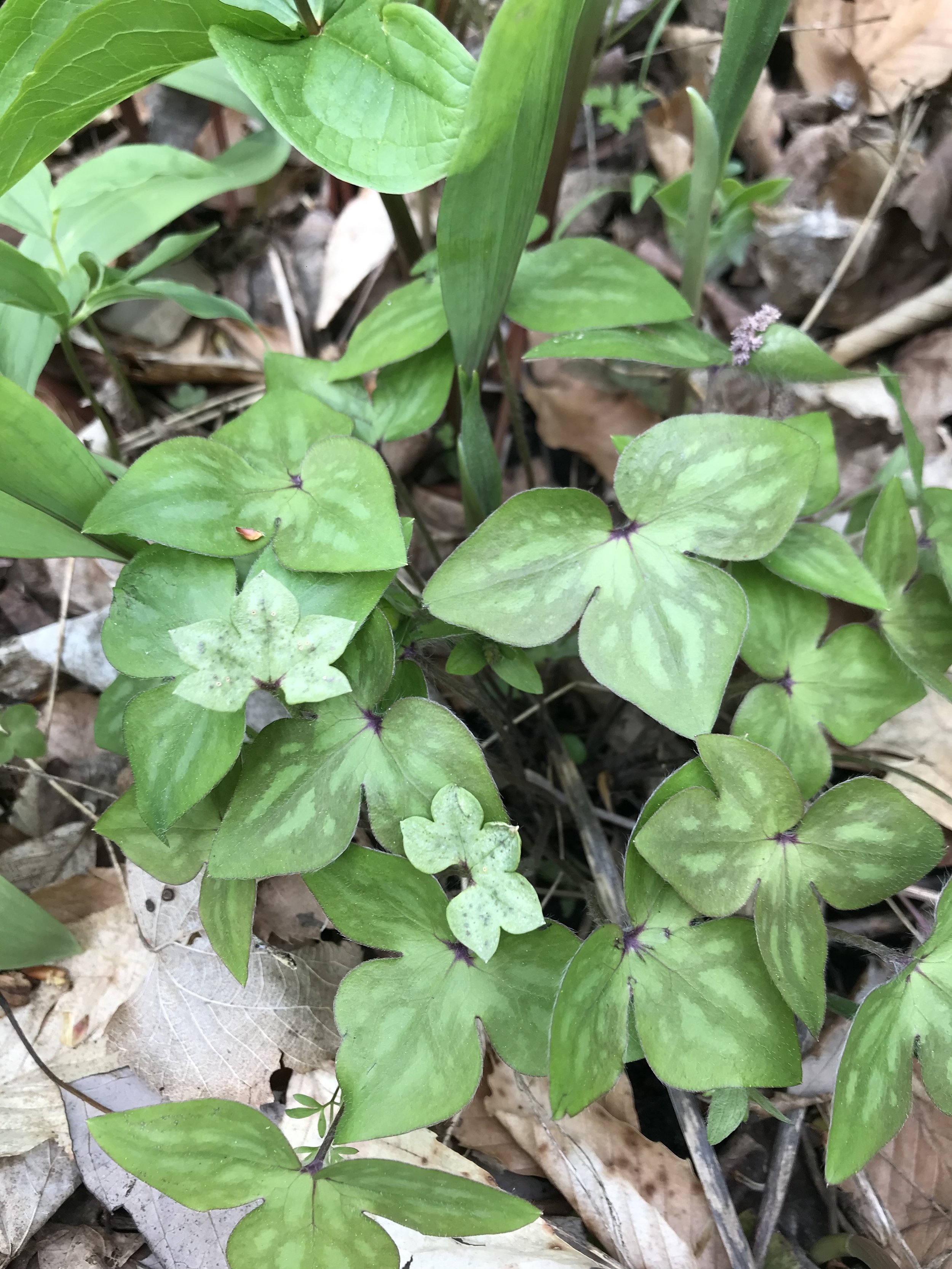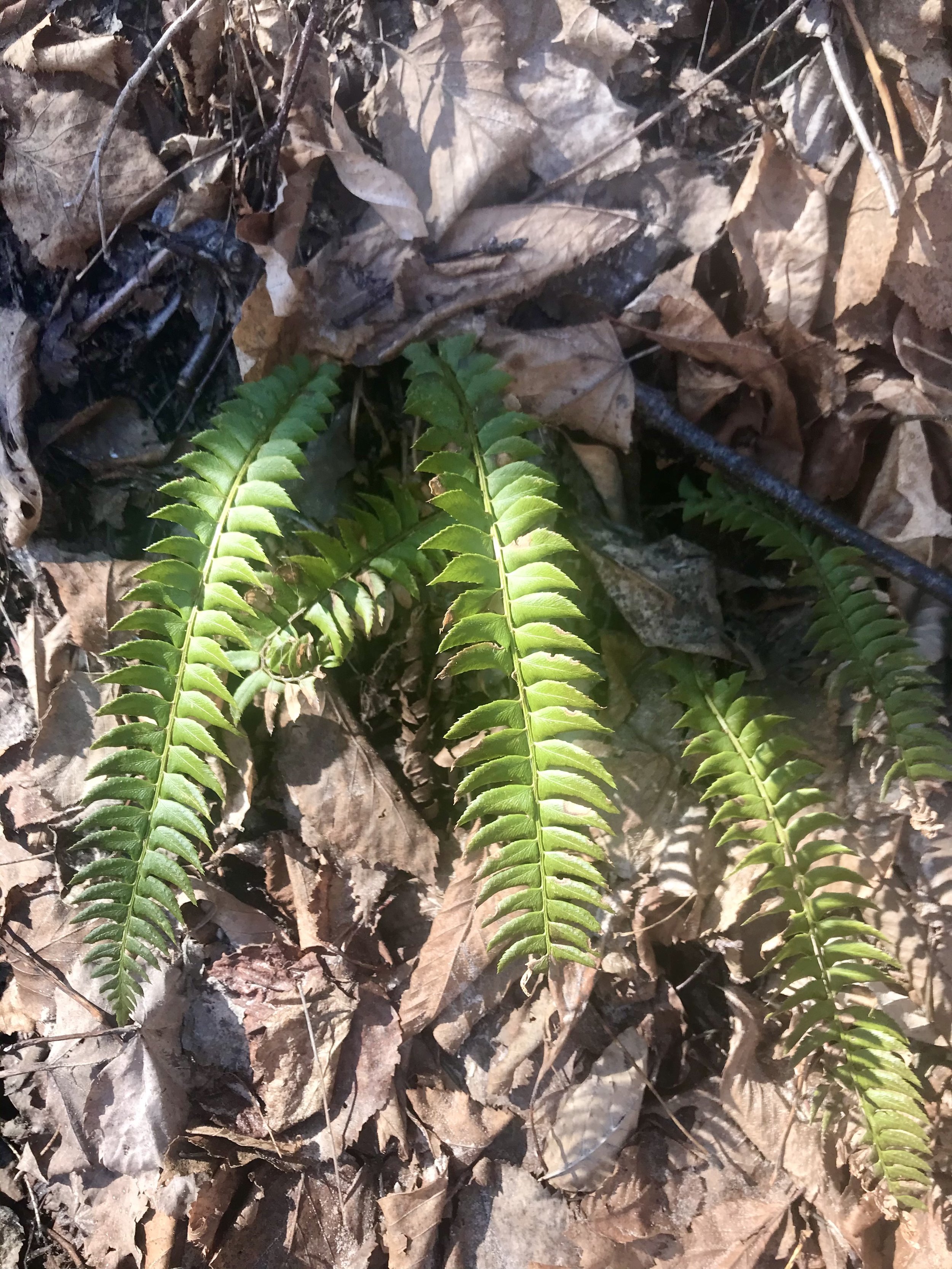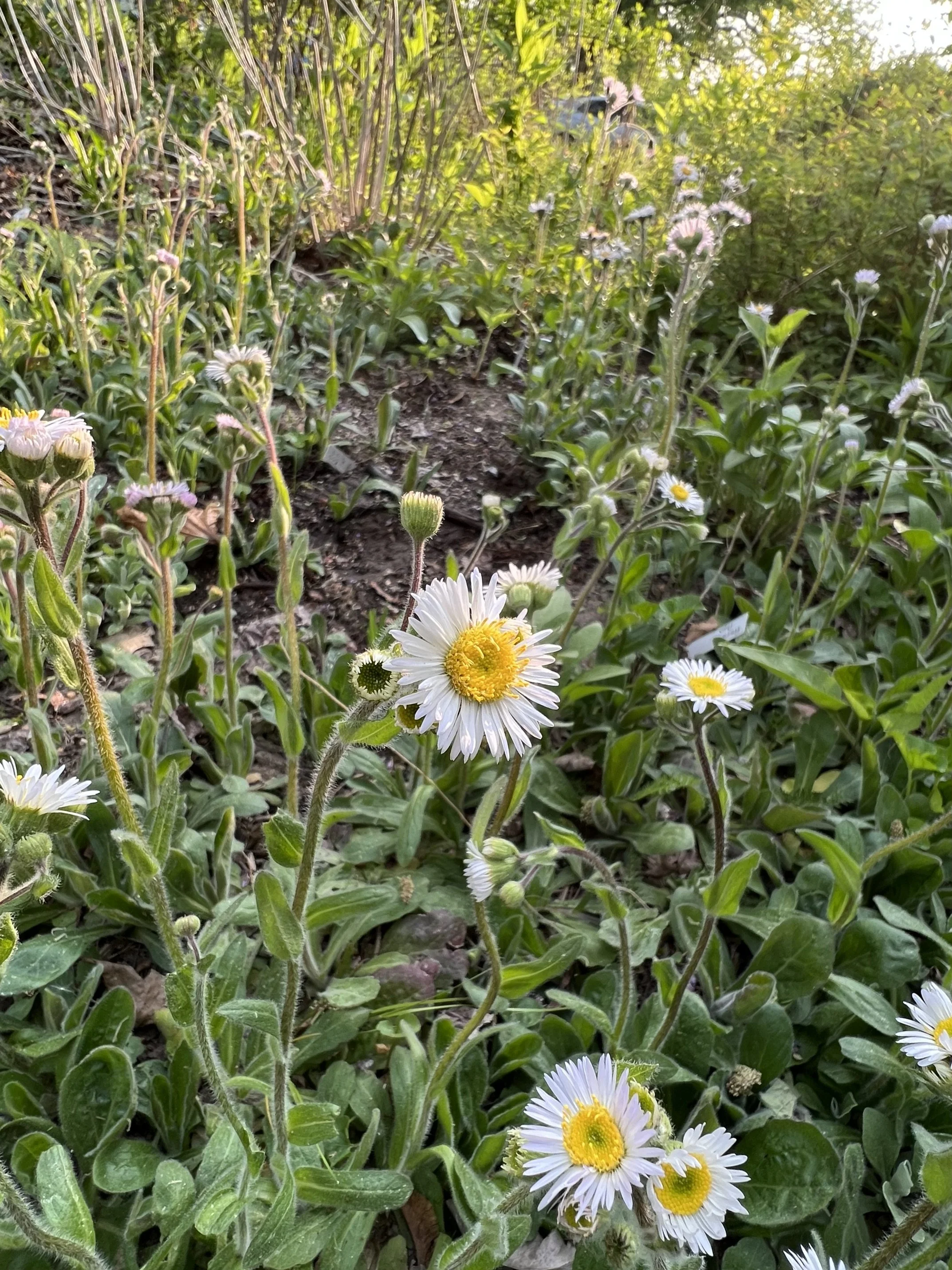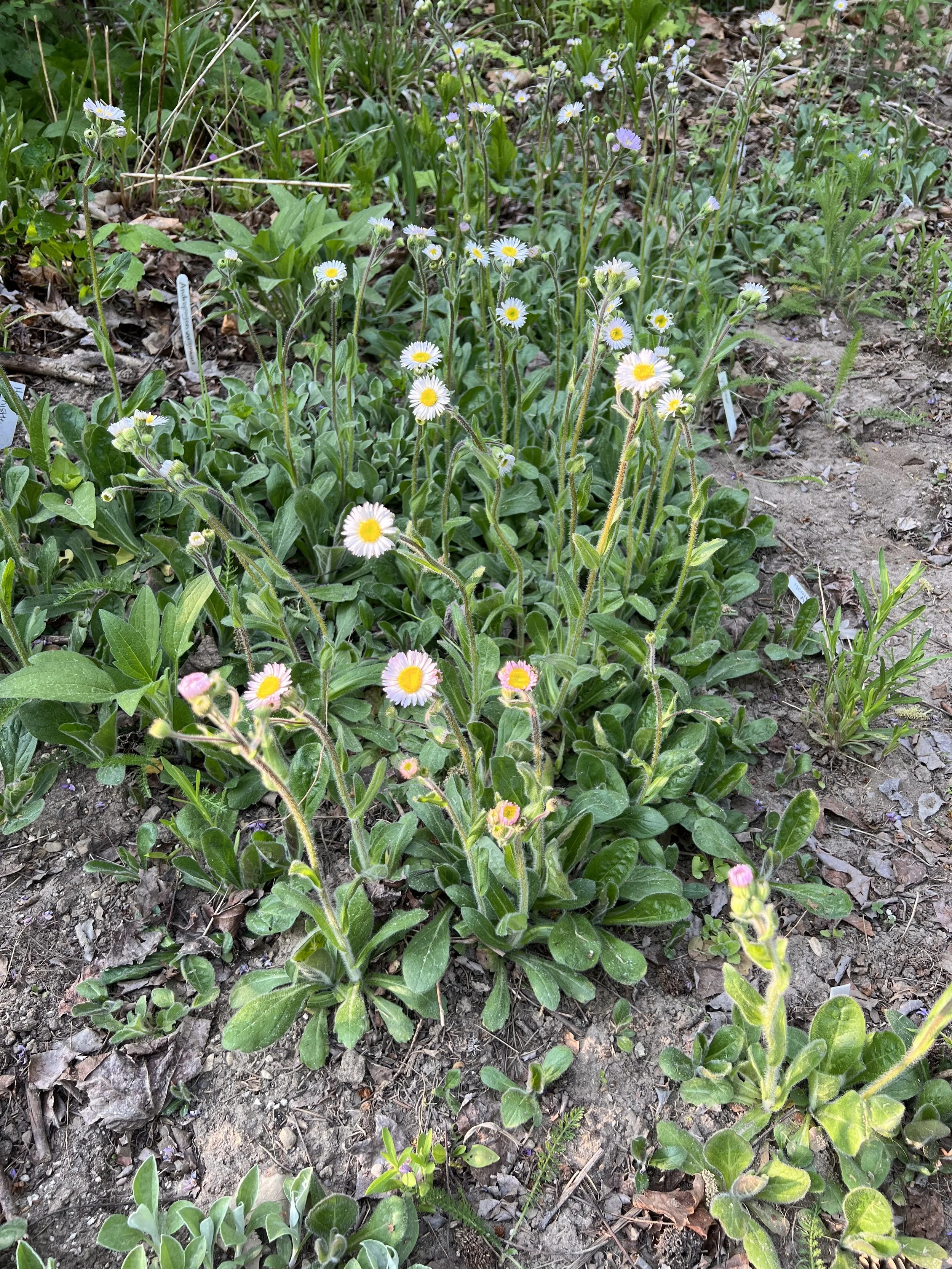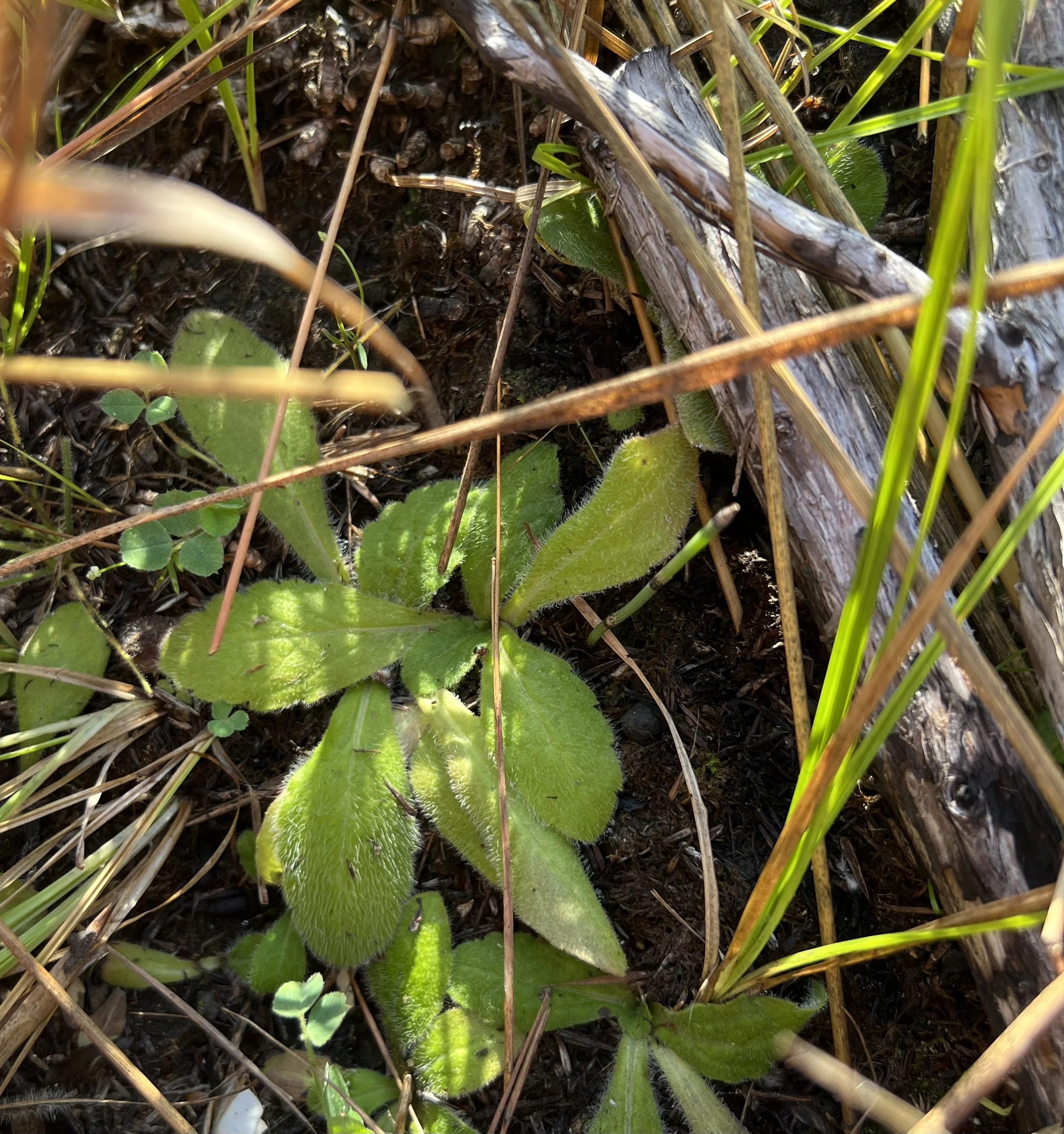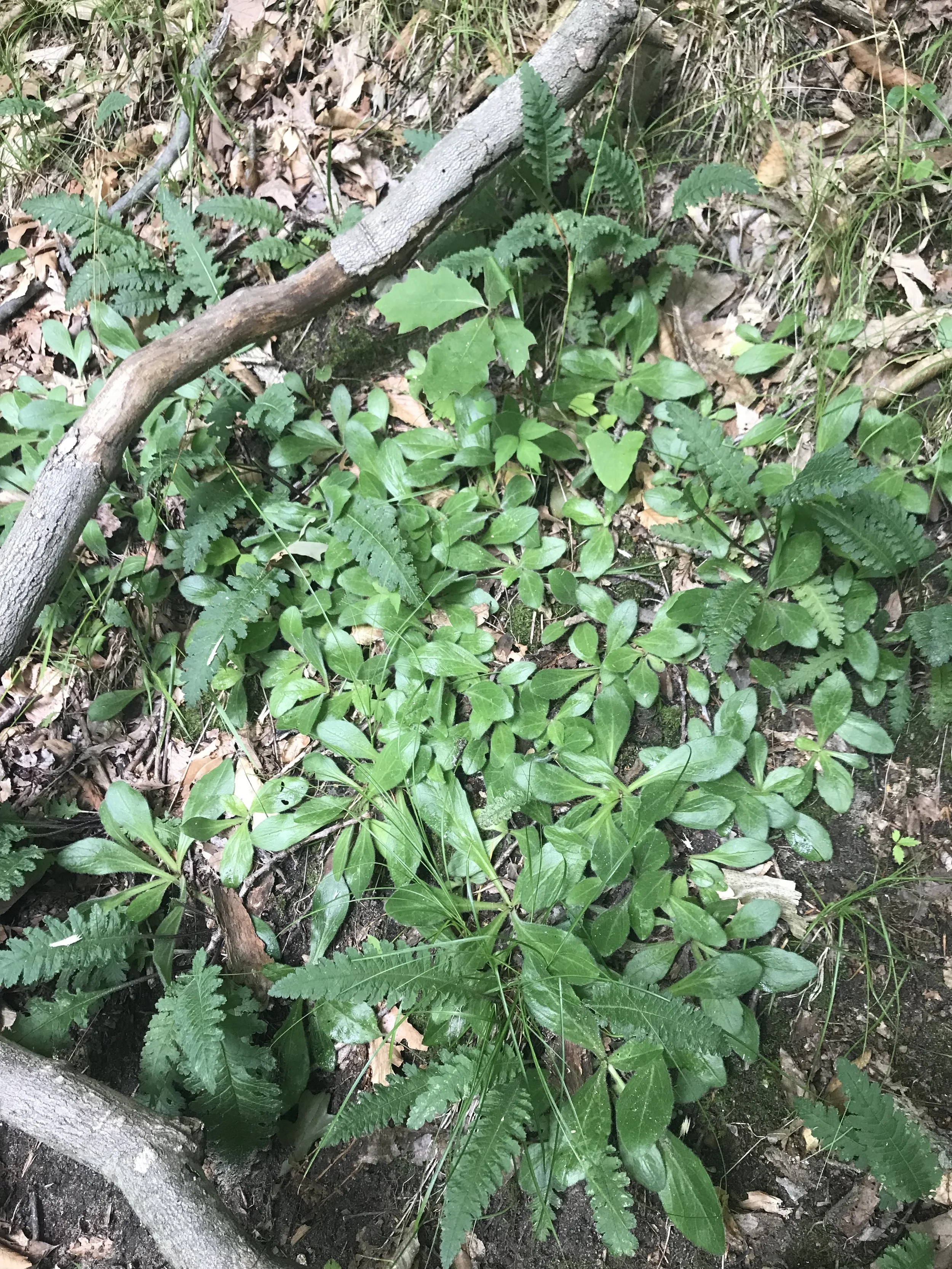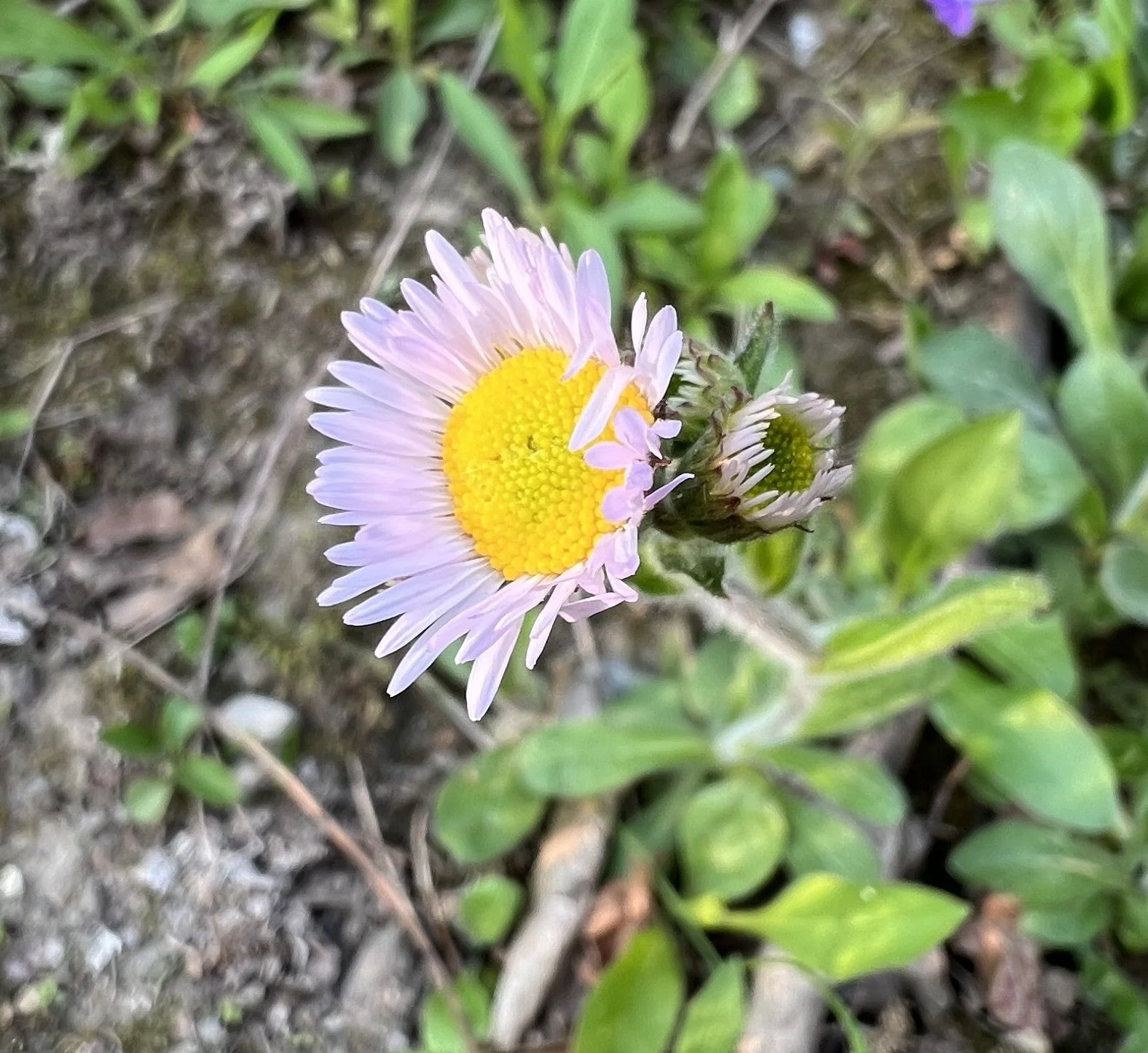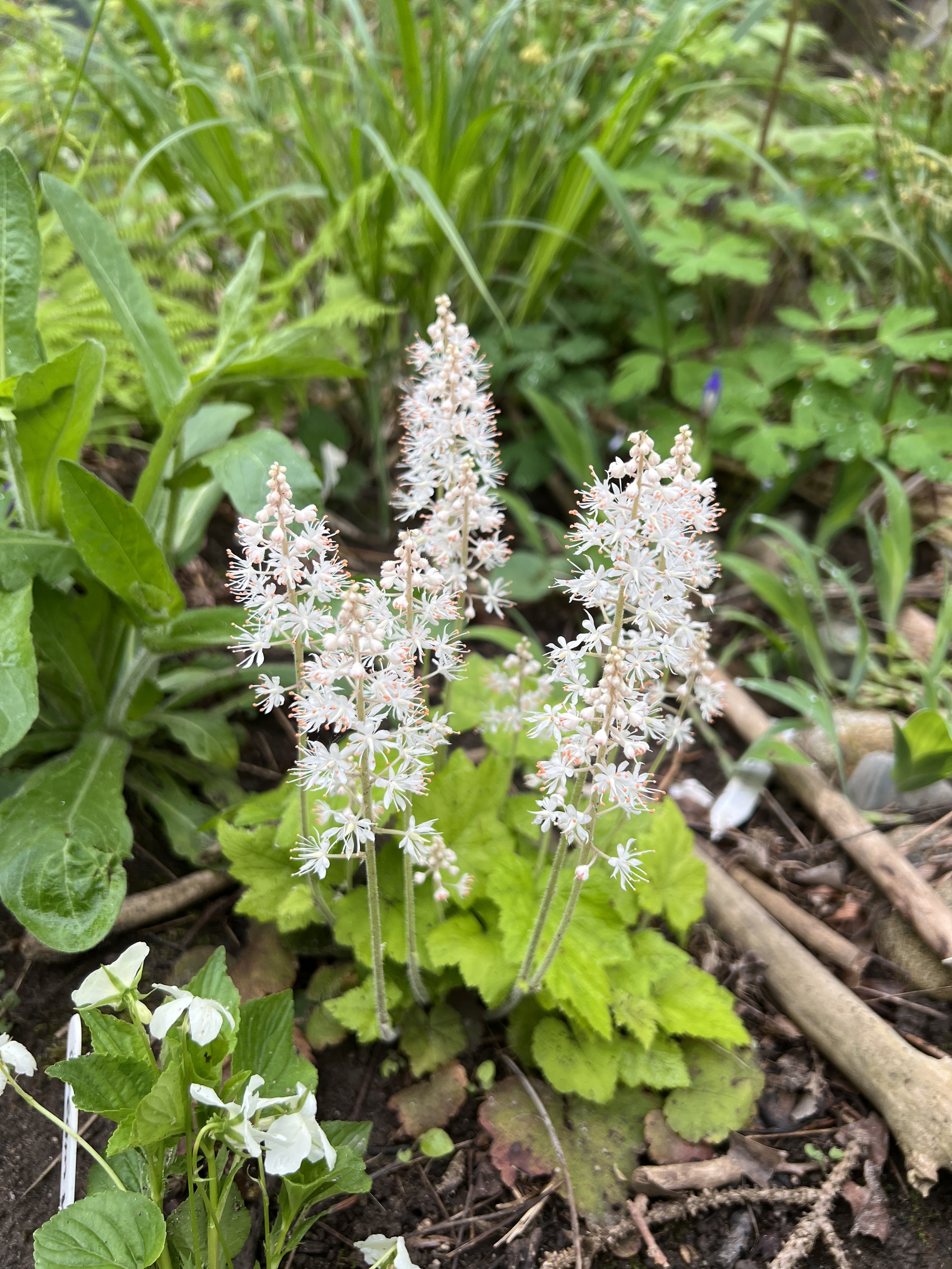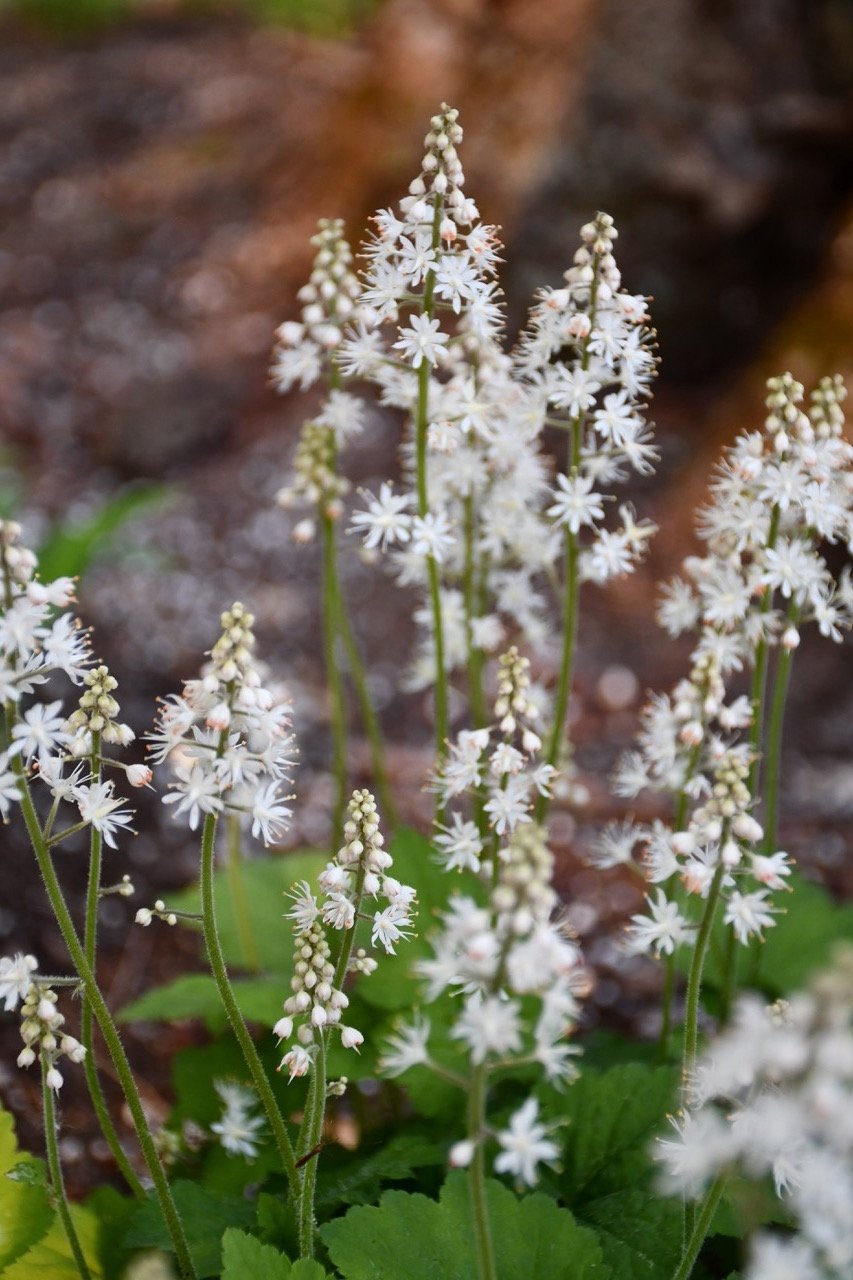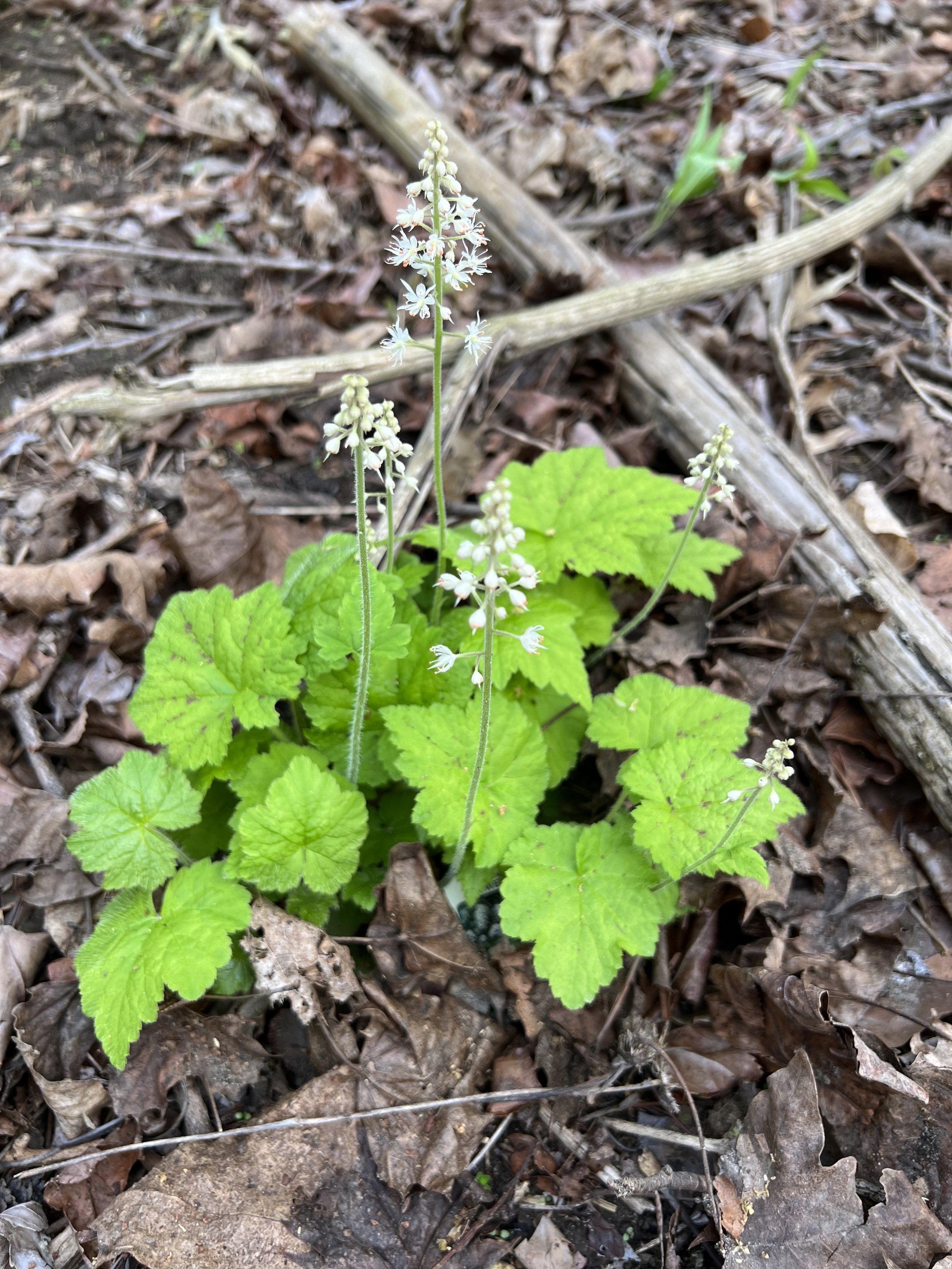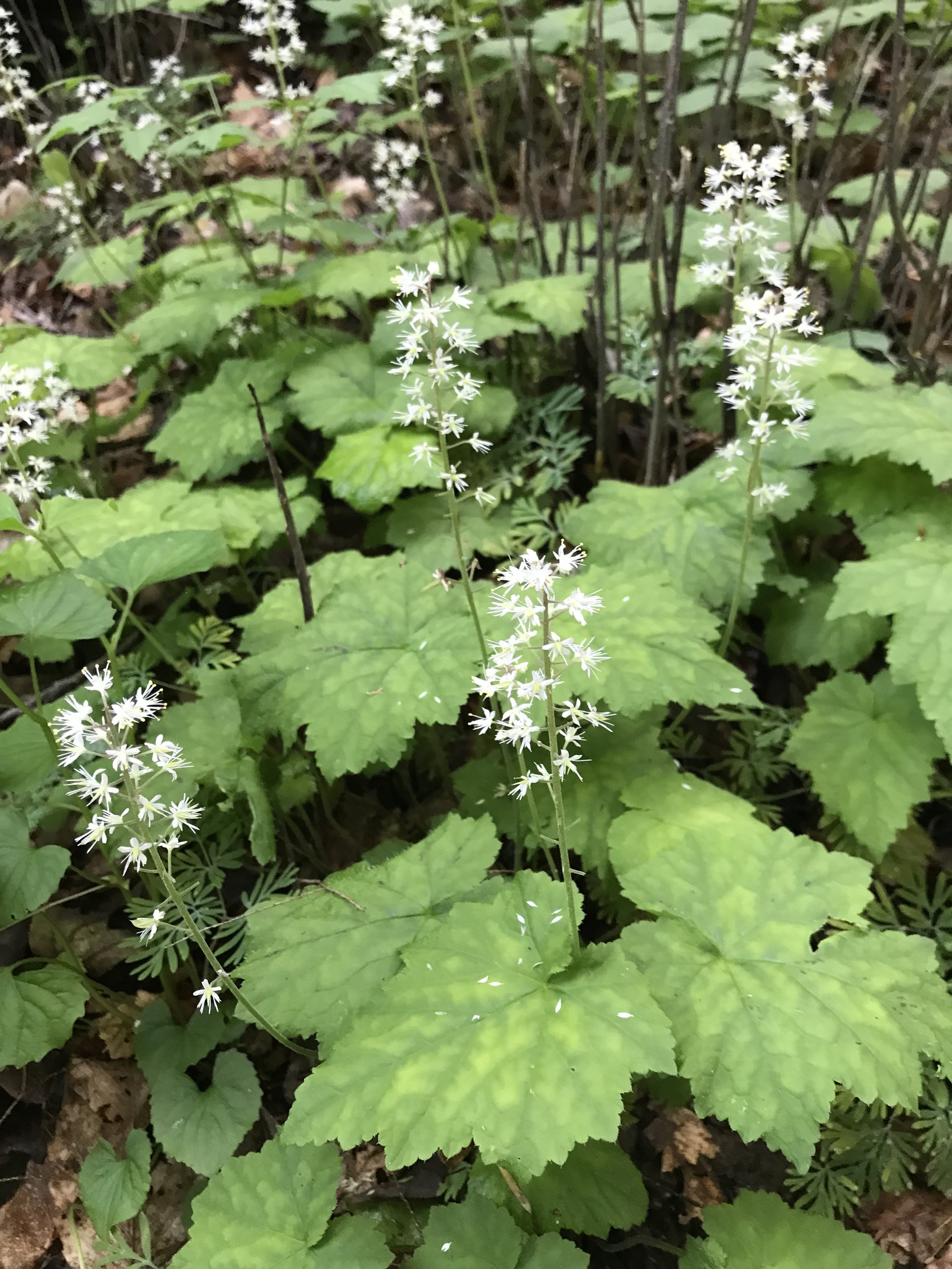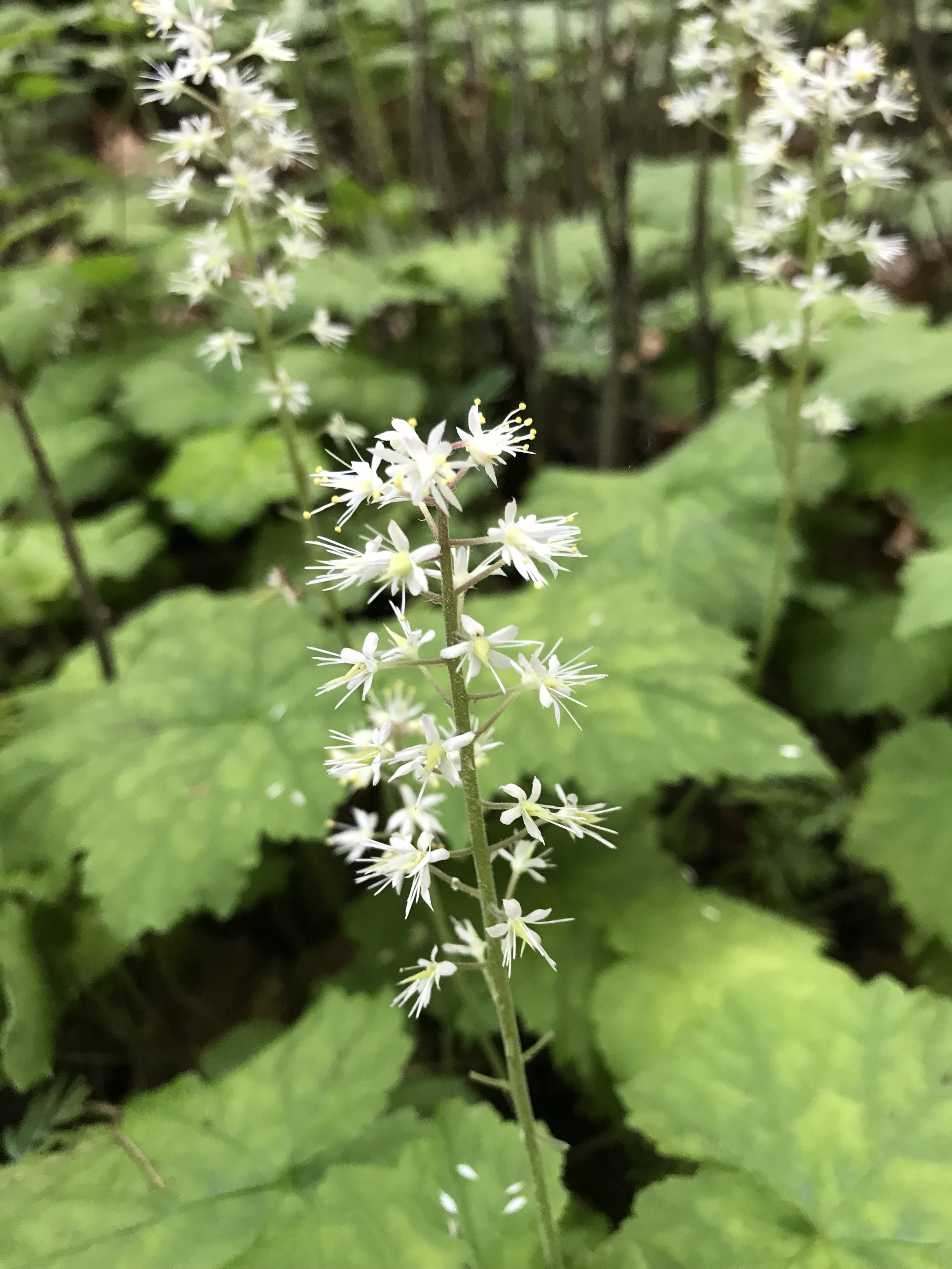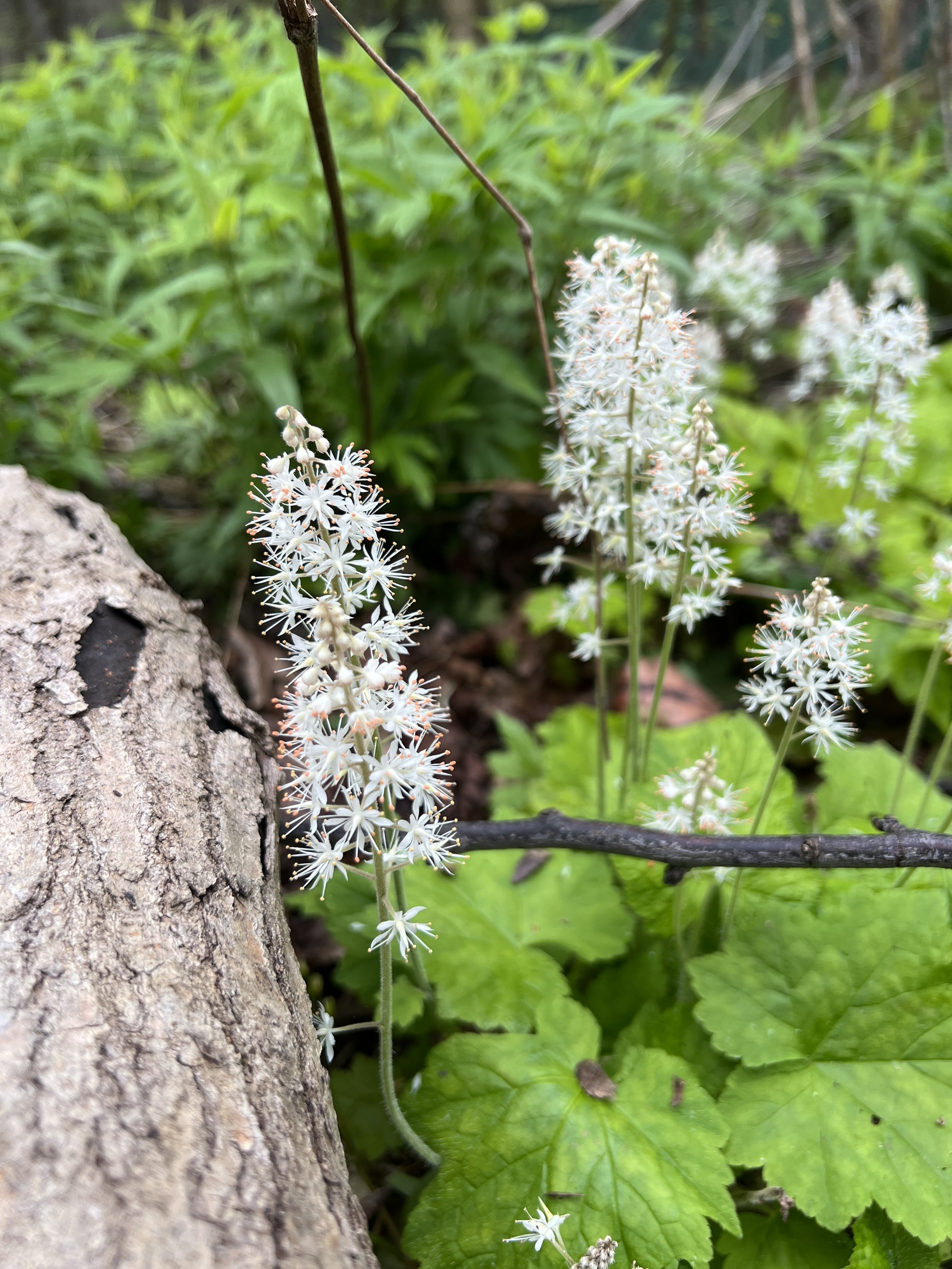(From “In Defense of Plants” podcast episode 350; the research of Dr. Joan Edwards on Isle Royale): Bunchberry has flowers that explode! Bunchberry “flowers” are actually about 30 small flowers in the center surrounded by showy white bracts. Plants mature a few of the tiny flowers at a time. Viewing the flowers under a lens, the stamens are bent (actually hinged) inside the four petals. One petal has a trigger hair. If an insect steps on the trigger, it explodes and catapults the pollen. The insect that is over the flower as it explodes gets its abdomen covered in pollen. The pollen is on the small side and can be carried by pollinators, but also by wind. One of the benefits of exploding flowers is the reduction of pollenivory (feeding on pollen). If insects don’t visit, the flowers explode on their own. But, there is more pollination if insects especially large ones, visit.


